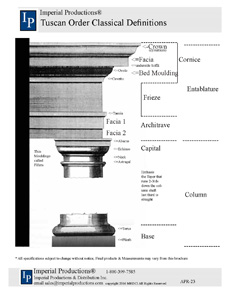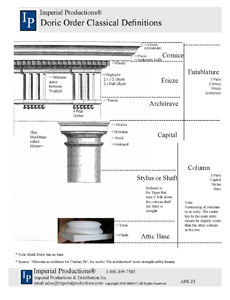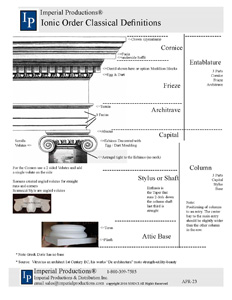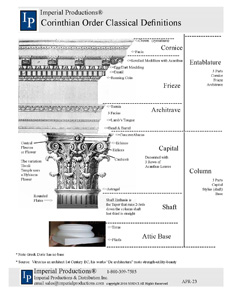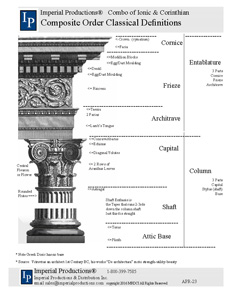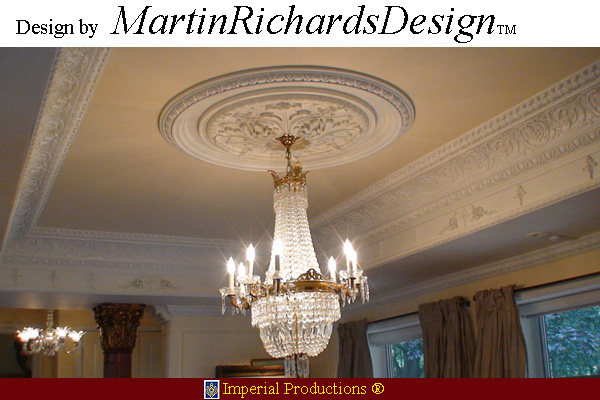Composite Order
Origins
The Composite
is a combination of Ionic and Corinthian.
with many more elaborate
features. It is denoted by
Acanthus
leaves in the columns capital and the volutes of
the Ionic
Order.
The crown
moulding is linear but is enhanced with lambs
Tongue. Under
the crown we find modillion blocks, and a
strip of
dentil moulding.
The frieze is denoted by a Rinceau
pattern. The
Taenia divides the Frieze from the Architrave
with a Lamb's
Tongue pattern. The Architrave is divided
into two
Facias by a Lamb's Tongue pattern.
Attic bases
are always engaged.
Click
to Enlarge the PDF


















